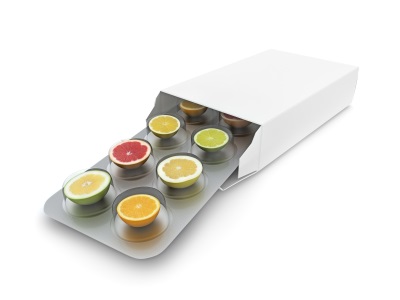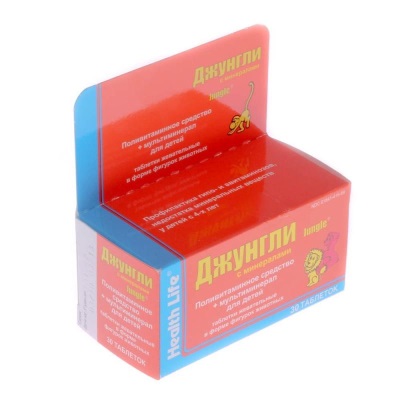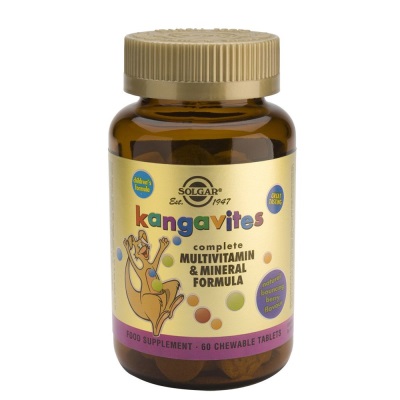Chewable vitamins for children
Complexes of vitamins for babies are produced in different forms, but chewable vitamins are most in demand. They are most often chosen by mothers and kids eat with pleasure. What are such vitamins are good for, do they have deficiencies and which chewable vitamins are most popular for filling the lack of vitamin compounds in childhood?
Benefits of Chewable Vitamins
The main advantage of vitamins that need to be chewed is their pleasant taste. Such children are perceived by most children as sweetness, therefore, it is very easy to give a vitamin preparation to a child. In addition, many chewable multivitamins are produced with an interesting shape to attract the child even more. On sale there are cubs, fish, stars, dolphins, various animals.
Lack of chewable vitamins
- In some multivitamins for chewing, a pleasant aroma and taste are provided by chemical compounds that can provoke an allergic reaction in a child. If the baby is prone to allergies, after the first dose of chewable vitamins, his reaction to the drug should be followed up, and in the event of any discomfort, immediately stop taking multivitamins.
- Since chewable vitamins are tasty and sweet, they resemble sweets for many children, so the child will be interested to get a treat and eat it in greater quantities than is acceptable. And therefore, the mother should be doubly alert and keep the package with chewable vitamins so that the child does not get to her and does not receive an overdose.

Some children can choke on a chewing tablet, so these multivitamins have age restrictions, and the child should chew on the vitamin in the presence of an adult.
Kinds
All chewable vitamins by their consistency can be divided into:
- Lozenges. They resemble marmalade or jelly candies, have a sweet taste and like most children.
- Hard pills. Chewing them is a little more difficult, and the taste of such vitamins is not very sweet, so some children refuse vitamins in this form. However, the composition of hard chewable tablets is often richer than that of lozenges.
If you take into account the composition of chewing vitamins, then such drugs are:
- Single component. An example of such vitamins can be chewable tablets with vitamin C.
- Multicomponent. Several vitamins are combined in their composition, and mineral substances and other additives (for example, extracts of berries and fruits or lecithin) may also be present.
Drug review
Among the chewable multivitamins in the form of marmalade pastilles most in demand:
- Vitrum Kids Gummy. These bears are used for children 3-7 years old and contain 11 vitamins, supplemented with iodine and zinc.
- Doppelgerz kinder Multivitamins for kids. Such “bear cubs” with raspberry flavor are recommended from 4 years of age and include 9 vitamins.
- Komplivit ACTIVE bears. From each lozenge of this complex, a child of 3-14 years old will receive 10 essential vitamins.
- Complivit FrutoVIT. Such fruit lozenges are given to children over 14 years old to supplement their ration with 8 vitamins and zinc.
- Pikovit Junik 3+. These "cubs" contain 11 vitamins, as well as 8 minerals for children over 3 years old.

- Univit Kids with Omega-3 and Choline. The complex is represented by cherry "dolphins", appointed from 3 years of age.
- Solgar. This manufacturer produces a line of marmalade vitamins in the form of cubes - U-Cubes. They are allowed for children over 2 years old and are represented by a complex of multivitamins with minerals, chewing calcium with vitamin D, and also chewing vitamin C.

- Supradin Kids. Such "fish" and "asterisk" pastilles include vitamins, omega-3 fats and choline. They are shown to children 3 years and older.
- Supradin Kids Bears. These marmalade "bear cubs" are designed for ages 11 years and older. They contain 9 vitamin compounds.
- VitaMishki. Under this name are produced multivitamins in the form of "bear cubs", appointed from 3 years of age. They are represented by a multivitamin complex enriched with iodine (Multi +), an additive for immunity (Immuno +), a complex with prebiotics (Bio +), a complex for eye health (Focus +) and an additive based on calcium (Calcium +).
The names of the most popular chewable children's vitamins in the form of solid tablets:
- Alphabet Kindergarten (for children 3-7 years old), Schoolboy (for ages 7-14 years old) and Teenager (for 14-18 year olds). They are tablets with cherry flavor (the main component is iron), orange-flavored (give the child antioxidants) and vanilla flavor (the main components are calcium and vitamin D).
- Multi-tabs. Under this brand produce several chewable vitamin-mineral complexes, designed for different ages. Raspberry-strawberry tablets complex Baby give a child 1-4 years. Strawberry or fruit tablets of the Junior complex are prescribed for children 4-11 years old. For teenagers, the company produces tablets with lemon-cola and orange-vanilla flavors. Complex Baby Calcium + is represented by banana and orange-vanilla tablets for 2-7 years of age, and strawberry-raspberry tablets of the Immuno Kids complex are indicated for children from 7 to 14 years old.
- Sana Sol. The company produces chewable vitamins for children 4-10 years old, as well as for adolescents 11-17 years old. Such preparations contain 8 minerals and 11 vitamins, and fatty acids are additionally present in the complex for children 4-10 years old.
- Compl Active chewing. Such tablets with the taste of banana, cherry, creme brulee and chocolate give a child of 3-10 years 11 vitamin compounds, iodine, magnesium and calcium.

- Supradin Kids Junior. The complex is represented by mandarin-orange tablets for children 5 years and older. It contains both vitamin compounds and valuable minerals.
- Pikovit Plus 4+. These banana pills include 12 vitamins, and also give a child over 4 years old iron, zinc, iodine, and calcium.
- Vetoron. These sea buckthorn tablets contain beta-carotene, as well as vitamins C and E.The complex is shown from 3 years of age.
- Vitrum Kids. Such strawberry tablets are designed for ages from 4 to 7 years. They have 12 vitamins, supplemented with 10 minerals.
- Jungle. These orange tablets are made in the form of different animals. Supplement is prescribed for children over 3 years old. It includes beta carotene and 10 vitamins.
- Vitrum Junior. These fruit pills give children 7-14 years old to add 10 minerals and 13 vitamin compounds to their diet.
- Jungle with minerals. Such animal-shaped orange pills are recommended for children over 6 years old. They contain 12 vitamins and beta-carotene, as well as 7 minerals.
- Vitrum Teenager. These chocolate tablets for 14-18-year-olds contain 11 mineral compounds and 13 vitamins.
- Solgar Kangavites Multivitamins and Minerals. Of these fruit or berry pills, a child over 2 years of age will receive not only 13 vitamin compounds and 10 minerals, but also natural supplements, among which are wild rose and citrus bioflavonoids.
In the next video, Dr. Komarovsky will tell parents about children's vitamins and what's more important is not vitamin vitamins, but a balanced diet.































